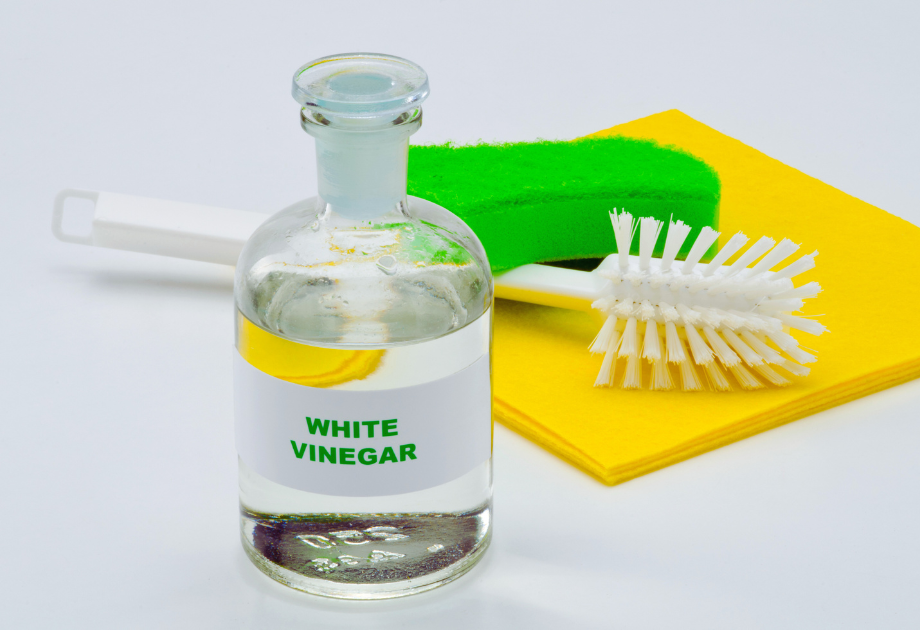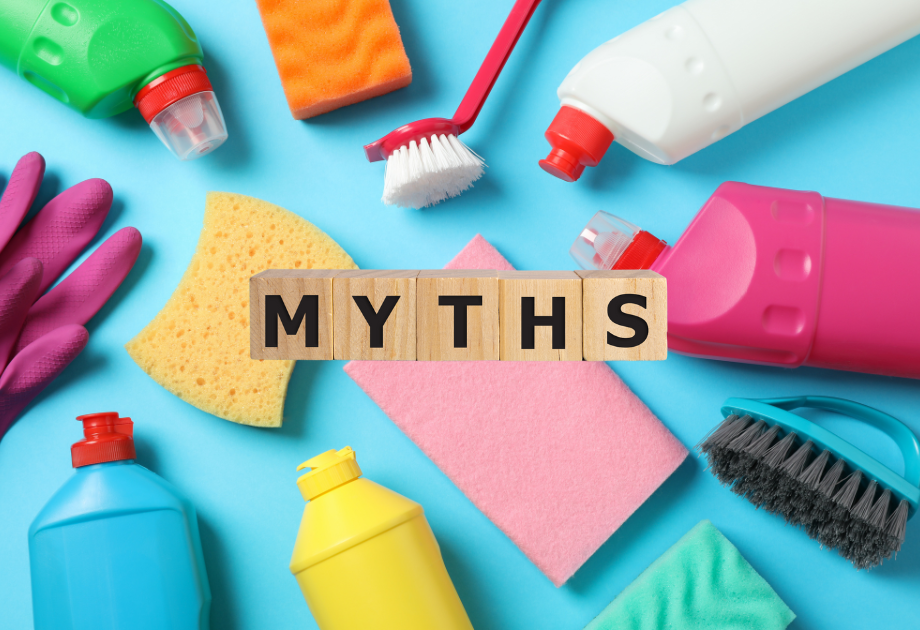Why Most Floor Maintenance Advice is Wrong
Why Most Floor Maintenance Advice is Wrong
(1).png)
Floor care advice is everywhere. Walk down any store aisle, scroll through social media, or ask a neighbor, and chances are you’ll hear a tip about how to clean hardwood floors or the wonders of a vinegar floor cleaner. It sounds helpful — but in reality, a lot of these "tried and true" methods are quietly causing long-term damage to floors across countless homes.
At A Step Above Flooring, we’ve seen the impact firsthand. Homeowners and property managers alike follow popular advice, only to find warped flooring, dulled finishes, or even voided warranties. The problem isn’t that people aren’t trying; it’s that most guidance isn’t specific to the floor under their feet.
In this blog, we’ll walk through some of the most common myths about floor maintenance, why they cause trouble, and how you can protect your investment with smarter, more targeted care.
Where Common Advice Goes Off Track
The trouble with most cleaning tips is that they sound universal. Articles, videos, and social media hacks often skip over the critical detail: different materials need different approaches.
What works wonders for old, waxed wood floors could destroy modern engineered hardwood. What leaves tile gleaming might erode the protective layers on luxury vinyl. In the rush to offer quick answers, many well-meaning sources leave out the specifics that matter most.
The advice isn’t usually malicious — but it’s incomplete. Over time, following outdated or generalized cleaning hacks can dull finishes, warp boards, and lead to expensive repairs or replacements.

Popular Myths That Are Causing Damage
Below are some of the most common misconceptions we hear — and the truth behind why they cause more harm than good.
“Vinegar Works on Everything”
Vinegar's popularity as a natural cleaner is understandable. It’s cheap, accessible, and feels safer than chemical-heavy products. But when it comes to hardwood floor maintenance, using vinegar to clean floors is a mistake.
Vinegar’s acidity strips the finish that protects wood and can weaken luxury vinyl planks (LVP) over time. Many manufacturers specifically caution against using any vinegar floor cleaner on modern floors. Although it’s tempting to trust a "DIY" shortcut, a DIY hardwood floor cleaner made with vinegar often shortens your floor’s lifespan.
For a better approach, stick with manufacturer-recommended, pH-neutral cleaners — or reach out to our team for guidance that’s tailored to your specific flooring.
“Steam Mops Are the Best for Sanitizing”
Steam mops feel like a dream: sanitize and clean at once, no chemicals required. But using a steam mop on hardwood and some other floors can cause serious damage.
Steam forces heat and moisture deep into the wood, leading to cupping, warping, or even separating boards. And it’s important to consider that steam cleaning often voids warranties on hardwood, laminate, and even some vinyl products.
Instead, microfiber mops with minimal moisture provide a much safer — and just as effective — way to clean and maintain your floors.
(If your floors are already showing signs of warping, you might want to read this guide on what to do next.)

“Soap and Water Are Always Safe”
It sounds harmless enough: a little dish soap, a bucket of warm water, and a good mop. But frequent mopping with soap and water leaves behind residue that dulls your floor’s finish. Worse, excessive water can seep into laminate and LVP seams, causing them to swell.
For safer cleaning, swap old habits for a microfiber system and a pH-balanced cleaner specifically formulated for your floor type. These small changes protect the beauty and integrity of your flooring.
“Every Scratch Means It’s Time to Refinish”
Not every scratch demands drastic action. Many marks are surface-level and can be polished or spot-treated without undergoing a full refinishing process.
Knowing when to spot-clean versus when to call in professionals can save you serious money. If you’re unsure, our team can help assess the condition of your floors and recommend the best solution. Visit our FAQs for more insights about maintaining your floors.
“Waxing is the Gold Standard”
Once upon a time, waxing floors was considered the ultimate maintenance step. But with today’s modern finishes like polyurethane and aluminum oxide, waxing can do more harm than good.
Wax creates a layer that traps dirt, interferes with proper cleaning, and makes future repairs much harder. For most contemporary floors, routine cleaning — not waxing — preserves their beauty and longevity.
“Fresh Smell = Clean”
A strong, fresh scent is nice, but it doesn’t always mean your floors are actually clean — or safe. Many heavily fragranced products leave sticky residues or contain chemicals that degrade protective finishes over time.
When choosing cleaners for hardwood floor maintenance or any flooring type, it’s better to prioritize gentle, residue-free formulas instead of chasing that "just-cleaned" smell.
“One Routine Works for Every Floor”
No two floors are alike. Hardwood, LVP, laminate, tile, and carpet each have unique needs, tolerances, and best practices. A cleaning method that’s perfect for tile could permanently dull hardwood, and a product that works wonders on carpet could stain vinyl.
Our team at A Step Above Flooring helps clients understand exactly what their specific floors need to stay looking beautiful.

Why These Myths Stick Around
Misconceptions about cleaning floors persist for a few understandable reasons:
- Viral hacks: Quick, eye-catching videos often favor immediate results over long-term care.
- Outdated habits: Techniques that worked decades ago aren’t always safe for modern flooring materials.
- Over-generalized advice: Many blogs and articles try to cover all flooring types in one post, skipping important nuances.
- Warranty confusion: Product warranties often include specific care instructions that get overlooked, leaving floors vulnerable to accidental damage.
The result? Homeowners and property managers trust advice that looks good on the surface but compromises their investment over time.
How to Clean Smarter Based on Your Floor Type
Choosing the right cleaning routine starts with knowing your floor material.
There’s no universal fix — and that’s why expert advice matters.
Here’s a quick look at safer cleaning practices for common flooring types:
- Hardwood floors: Use a microfiber mop and a pH-neutral hardwood cleaner. Avoid excess water, vinegar, and steam mops.
- Luxury Vinyl Plank (LVP): Stick with vinyl-safe, non-abrasive cleaners and avoid soaking the surface.
- Laminate flooring: Dry-mop regularly and use cleaners made for laminate. If needed, use a lightly damp mop—never soak the floor, as moisture can damage the seams. Avoid steam mops and excess water.
- Tile flooring: Clean with a pH-neutral tile cleaner and sweep regularly to protect grout and surface texture.
Matching the right method to the right surface protects your floors — and your investment — for the long haul.
Create a Smarter Cleaning Routine with A Step Above Flooring
Floor care isn’t about following the loudest advice online — it’s about using the right techniques for the right materials.
At A Step Above Flooring, we help homeowners and property managers protect their investment with real, personalized guidance. Our team can assess your floors’ current condition, recommend the right cleaning routines, and help extend the life of every surface — so you can enjoy beautiful floors without second-guessing your maintenance habits.
Ready to take better care of your floors without the guesswork? Contact us today to get started.
